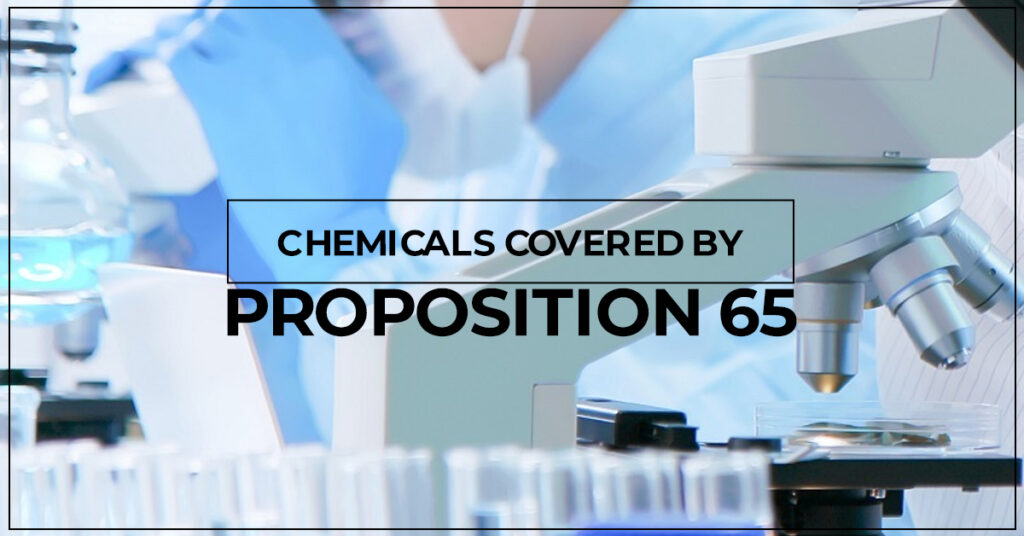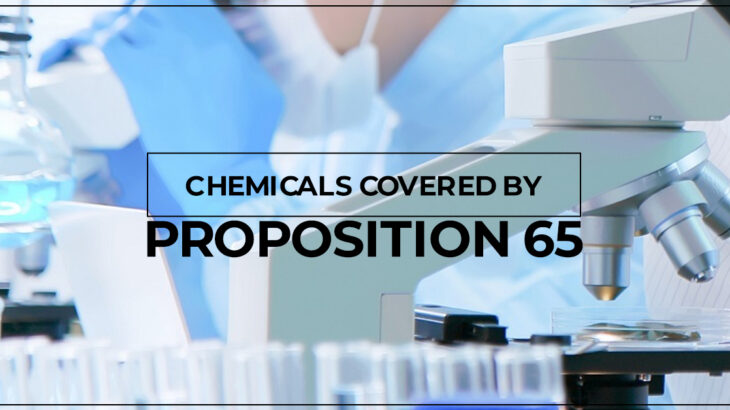
The Safe Drinking Water and Toxic Enforcement Act of 1986, also known as California’s Proposition 65, is a significant piece of law designed to shield the general public’s health from exposure to dangerous chemicals. Businesses are required by law to give consumers fair and unambiguous warnings before exposing them to chemicals that are known to cause cancer, birth defects, or other reproductive damage.
Based on scientific proof of their carcinogenicity or reproductive toxicity, the state of California has listed the chemicals covered by Proposition 65. This list, updated annually by the California Office of Environmental Health Hazard Assessment (OEHHA), almost 900 chemicals are already on the list, comprising both manufactured and naturally occurring molecules that are frequently encountered in everyday items. Among the well-known substances that Proposition 65 addresses are:
Heavy Metals:
Proposition 65 regulates the following heavy metals- lead, mercury, cadmium, arsenic, and chromium. Because they are known to cause reproductive toxicity, developmental toxicity or cancer. These metals are present in a range of consumer goods, industrial operations, and environmental materials.
Industrial Chemicals:
Because of their reproductive toxicity or carcinogenicity, chemicals including vinyl chloride, toluene, formaldehyde, and benzene that are often used in industrial operations are covered by Proposition 65.
Pesticides:
Proposition 65 laws apply to some pesticides and herbicides, including as glyphosate, the main component of Roundup. Although these chemicals are frequently used in landscaping and agriculture, they can be hazardous to the environment and human health.
Phthalates:
Phthalates are a class of compounds that are frequently used to increase the flexibility and softness of polymers. Certain phthalates, such bisphenol A (BPA) and di(2-ethylhexyl) phthalate (DEHP), are known to be harmful to reproduction and are covered by Proposition 65.
Other Chemicals:
A wide range of additional chemicals that are present in food and drink items, consumer goods, and environmental sources are also covered by Proposition 65. Examples include tobacco smoke, some flame retardants, and acrylamide, which are created when food is cooked at high temperatures.
These are only a few instances of the wide variety of substances that Proposition 65 protects against. The Office of Environmental Health Hazard Assessment (OEHHA) in California updates the list on a regular basis in response to new scientific findings and changes in regulations. It’s crucial to remember that a product’s safety when used according to its intended usage is not always correlated with a chemical’s inclusion on the Proposition 65 list. Rather, the goal of the law is to arm customers with knowledge so they may decide how much risk they are willing to accept.
Companies that are governed by Proposition 65 are required to take action to guarantee compliance, including determining the chemical composition of their goods and, if required, issuing the relevant warnings. The regulations of Proposition 65 carry serious penalties and legal ramifications for noncompliance.
In conclusion, by controlling exposure to dangerous substances, Proposition 65 significantly contributes to the protection of public health. The law gives customers the ability to make educated decisions about the items they use and the risks they are willing to take by promoting transparency and increasing awareness. Sunstream has been providing services on multiple environmental compliance regulations over several years. From RoHS Compliance services to REACH compliance services and PFAS compliance, Sunstream has services to ensure your product environmental compliance.




 +1.585.935.7123
+1.585.935.7123 +91-804-148-6861
+91-804-148-6861